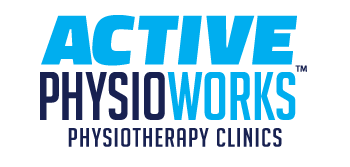Pregnancy and Low Back Pain
Jul 08, 2019
50% of women during pregnancy develop low back pain or pelvic girdle pain. Pelvic girdle pain is lower than typical back pain and can show up in the back around the sacroiliac (SI joints) or can show up in the front around the pubic symphysis. Both joints are going to widen naturally due to relaxin and estrogen in the body so there is more room for the delivery of a baby. The widening of these joints was previously blamed for the pain that women experience during pregnancy. More and more research is now disproving that the widening of joints is the cause of the pain and other findings are coming to the surface.
Women with low back pain/pelvic girdle pain during pregnancy have a couple of things in common.
- A hypertonic (TIGHT) pelvic floor.
- High cortisol levels (STRESS) hormones.
These are some pretty interesting findings because these two things also go hand in hand. Stress can cause the pelvic floor muscles to tighten up and when a muscle is really tight it cannot function optimally. Not only can it not contract properly to “kegel” or stop pee, it won’t be able to do the opposite; it won’t be able to relax. During delivery the pelvic floor needs to be able to relax as the uterus contracts so the baby can be delivered. Without a properly relaxed pelvic floor women are at a higher risk for tearing in the perineal area.
Low back pain during pregnancy should not be ignored. It is more than just pain and can be an indicator of your stress levels. It can also be an indicator of how your delivery process may be. There are many things you can do to make your whole pregnancy and delivery more comfortable, if you seek some help from a pelvic health therapist and other health care professionals with expertise in pregnancy and delivery.
What to do if you start experiencing low back pain during pregnancy?
Get an assessment by your doctor or a pelvic health therapist. An internal assessment should be performed in order to know the tension of the pelvic floor. There may be some reasons that your doctor may tell you not to have intercourse during your pregnancy and in this case you are also not able to have an internal examination, otherwise it is perfectly safe.
Your pelvic health therapist will walk you through the assessment process and let you know their findings and explain it in a way that makes sense to you. Your pelvic health therapist will help you with specific exercises you need to work on. They can also educate you on delivery positions that will be best for you, tips to get through labour, and aftercare for your post-partum recovery.
Other great things for you to start doing are light exercises. The easiest one to do is to just walk as much as you can tolerate. Getting as much blood flow to the legs and pelvic floor can really take a lot of congestion away and help with the tension and pain. Yoga is another great exercise to start doing; find a class in the area or do some at home with a guided video. The last thing I would encourage you to begin is to take some time to get in some deep breathing. This is important for your core and important for decreasing those stress hormones.

Please add your bio info through your member profile page, or through your dashboard.

